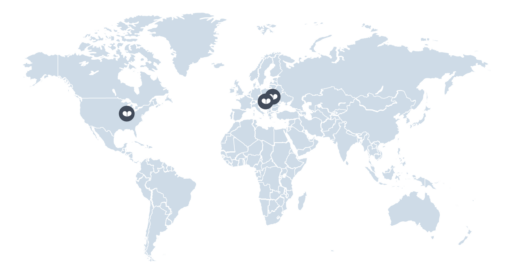To navigate marketing’s intricacies, you need a polished roadmap to light the way and help you reach your goals. The addition of marketing operations, or MOps for short, to your company, is a massive step in the right direction. Still, having MOps doesn’t necessarily translate to success. Your MOps need to rest on a solid foundation, allowing you to reach your short- and long-term marketing objectives.
This article explores why having a clearly defined MOps structure is essential, what the ideal structure looks like, and the key roles of your MOps team.
Why is a marketing operations structure important?
A marketing operations structure is essentially the backbone of your marketing effort. It defines the responsibilities of MOps team members, clarifies the chain of command, and outlines the way your MOps will function. An effective MOps can help you generate leads and consistently increase your marketing ROI.
Additionally, having a clear MOps structure gives you a bird’s eye view of what your team members need to accomplish. It allows you to communicate your marketing mission. And it helps your MOps professionals understand their function in your organization, making it clear that they are essential to your marketing effort.
Is there an ideal marketing operations structure?
Companies are similar in many ways, but no two companies are identical. For that reason, there isn’t a one-size-fits-all structure that guarantees success. It also largely depends on a company’s size and specific needs. Small companies may only need a handful of people to run MOps. In contrast, a large company needs a small army of specialists to function effectively.
In either case, you must have a MOps team. Having a makeshift MOps team composed of marketers who already have a lot on their plates will prove ineffective in the long term. Ultimately, your MOps structure depends on your marketing strategy – it determines how you’ll choose your people, processes, and technology.
What is a marketing operations team?
A marketing operations team comprises experts that run your MOps. These experts strategize, plan, deploy, and track your marketing efforts. They are compatible and complement each other’s skills. Each team member must understand their objectives and the overall mission set by stakeholders.

What does a marketing operations team do?
From marketing campaigns to content creation and marketing automation, MOps teams oversee the entire marketing effort of a company. A successful MOps team can:
- Increase marketing productivity
- Track content performance
- Reduce manual functions
- Maximize automation
- Identify gaps in marketing processes
- Adopt new tech to boost efficiency
Essentially, MOps is driven by three pillars: people, processes, and technology. Therefore, MOps teams use processes and technology to plan, create, manage, and analyze virtually all aspects of a company’s marketing.
To adequately structure your MOps, you need to define the key roles that will lead your MOps team.
What are the key roles of marketing operations?
While company size determines how many people are needed to run a MOps, this is what a full-fledge MOps structure looks like:
- Director of Marketing Operations
- Marketing Operations Manager
- Marketing Technology Manager
- Data and Analytics Manager
- Content Manager
- Digital Platform Manager

Director of Marketing Operations
The Director of Marketing Operations is often regarded as the highest-ranking team member in the MOps structure. They work closely with marketing, sales, and IT managers to make budget decisions and evaluate gaps in the marketing effort. Directors of Marketing Operations can:
- Hire new talent
- Purchase new technology
- Improve processes
- Build brand awareness
- Analyze overall marketing results
- Oversee the performance of marketing campaigns
The Director of Marketing is thus less on the strategic development side and more on the execution side of the equation. They need to have a significant amount of creativity to develop new ways to grow brand awareness and plan new marketing campaigns.
Marketing Operations Manager
Less on the creative side, Marketing Operations Managers play a technical and analytical role. Their expertise spreads far and wide, touching every part of the marketing effort. They are expected to:
- Manage marketing stacks
- Optimize processes
- Collect and analyze marketing data
- Evaluate marketing team efficiency
- Manage risks and comply with a marketing budget
Additionally, Marketing Operations Managers educate marketing teams and ensure that they work seamlessly.
Marketing Technology Manager
In charge of setting up and integrating technology stacks, Marketing Technology Managers are responsible for improving workflows and optimizing automation. They are tasked to:
- Recommend new technology stacks
- Fulfill marketing goals via technology
- Deploy and suggest marketing automation
- Manage a team of technology specialists
- Collaborate with the IT department
Data and Analytics Manager
Apart from leading a team of data analysts, Data and Analytics Managers oversee the function of the analytics department.

They’re expected to put together a team of highly-skilled data specialists and also:
- Develop processes for data analysis
- Recommend how to best use data to reach marketing goals
- Interpret data and present it to stakeholders
- Keep up with marketing data trends
- Research and collect data to find solutions to marketing issues
Content Manager
Content Managers lead a team of content writers and copywriters. They must build a branding identity and online presence. They’re expected to:
- Instill a positive view of the company and its product/service via multimedia content
- Develop a web content strategy aligned with company goals
- Work with SEO Specialists to plan keyword strategies
- Oversee content production and monitor its long-term efficiency
- Create a content calendar and constantly meet content goals
Digital Platform Manager
Digital Platform Managers are in charge of all web-related functions. They create, optimize, and manage a company’s web activity. They also:
- Optimize website to drive traffic
- Manage security issues
- Improve web user experience (UX)
- Align websites with the target audience and customer journey
- Collaborate with content and sales team for product and service launches
Last thoughts
Planning your structure is the first step to building effective MOps that will help you drive ROI and scale your business. Your MOps will succeed if you choose the right people to optimize your marketing functions.
Frequently Asked Questions (FAQ)
Marketing operations in a marketing organization are pivotal for streamlining business processes, managing marketing automation tools, and ensuring that marketing strategies are effectively executed. This department plays a key role in aligning marketing efforts with business goals.
The marketing ops team contributes to the overall marketing strategy by implementing marketing automation platforms, overseeing marketing channels, and ensuring that marketing campaigns are aligned with strategic planning and business objectives.
A marketing ops manager’s key responsibilities include overseeing the marketing operations team, managing the marketing technology stack, and ensuring that marketing operations are aligned with the company’s marketing strategies and business goals.
An effective marketing operations strategy is crucial for a marketing department as it ensures that all marketing tasks are executed efficiently, marketing investments are optimized, and marketing assets are leveraged to achieve the desired business outcomes.
Marketing operations professionals support marketing initiatives by managing customer data, optimizing marketing automation tools, and implementing new marketing processes that enhance the effectiveness of marketing campaigns and strategies.
Marketing operations management is significant in reinforcing marketing strategy as it involves overseeing the execution of marketing plans, ensuring that marketing efforts are cohesive, and aligning marketing operations with the company’s strategic objectives.
The marketing operations department interacts with other business leaders by providing insights on marketing performance, collaborating on strategic decisions, and ensuring that marketing operations support the overall business and marketing objectives.
Marketing operations teams should follow best practices such as maintaining clear communication with the entire team, regularly reviewing and optimizing marketing processes, leveraging marketing technology for efficiency, and aligning marketing operations with the overall marketing and business goals.
Marketing automation significantly impacts the efficiency of marketing ops teams by automating repetitive tasks, enabling better management of marketing channels, and providing analytics for data-driven decisions. This allows the team to focus on strategic initiatives and more complex aspects of marketing operations management.
Process management is important in marketing operations as it ensures the smooth execution of marketing tasks, from campaign management to lead generation. Effective process management helps in streamlining operations, reducing errors, and improving overall efficiency in the marketing department.
Marketing operations contribute to lead generation and campaign management by utilizing marketing automation platforms to streamline operations, track performance, and optimize strategies. They ensure that each campaign is effectively executed and aligned with the company’s lead generation goals.
Marketing operations are important for marketing managers and the entire team as they provide the structure and tools needed for efficient marketing execution. They ensure that marketing strategies are effectively implemented, marketing assets are properly utilized, and the team’s efforts contribute to the company’s overall marketing and business objectives.
Author

Peter Fechter
Peter is Digital Marketing Manager at MARMIND and is mainly responsible for website and lead management. When he's not busy creating content, he is developing new strategic approaches for campaign planning.














